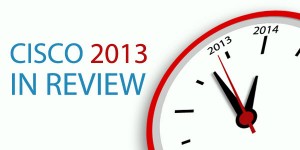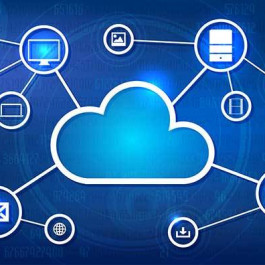
At the end of this year, most people enjoy Christmas holidays with their family. Everyone may make the list of his major events in 2013. What are yours? For Cisco, the past year saw several major events and product introductions unfold, beginning with an effort to connect cars to the Internet and ending with a solid pipeline in place for its new data center switches and fabric technology.
Here we have a look back at the Cisco’s highlights in 2013. The following is a review of major moves at Cisco.
January
Cisco and NXP Semiconductors N.V. invest in Cohda Wireless for connected car technology. Car-to-Car and Car-to-Infrastructure (C2I) communications will enable active safety systems that would help reduce fatalities and injuries on the roads, the companies say. In addition to improving safety, C2I communication could benefit intelligent transport system management and reduce greenhouse gas emissions from vehicles, they say.
Cisco is sued by East Carolina University over its new “Tomorrow Starts Here” marketing campaign. ECU claims to have been using the slogan as its brand identity for a decade. As of December 2013 however, Cisco is still using the slogan in its “Internet of Everything” campaign.
Catalyst 3850–Cisco rolls out the Catalyst 3850 switch, which features a new programmable ASIC for wired/wireless convergence and software-defined networking capabilities.
February
Cisco unveiled the Nexus 6000 10G/40G switch line, which is targeted at data centers needing 40G aggregation. It goes up against 10G and 40G offerings in Arista Networks’ 7000 series switches, Dell’s Force10 switches and Juniper’s QFabric platforms.
West Virginia blasts Cisco and its own state procurement practices for a statewide router purchase it alleges far exceeds requirements and costs millions more than necessary. Cisco pledges to work through the situation with the customer.
March
Cisco rolls out the ISR-AX line of branch routers, which integrate security and application performance features, including WAN optimization, as well as VPN, firewall and intrusion prevention, application visibility and control, and WAN path management.
Cisco introduced the CPAK CMOS transceivers, photonic physical interface technology designed to reduce power consumption and the cost of sparing. CPAK will eventually turn up in Cisco’s new CRS-X core routers and Network Convergence System offerings for service providers.
April
Cisco and IBM form the OpenDaylight consortium to develop an open source software-defined networking framework based on multiple, industry wide contributions. The vendor-driven effort is met with skepticism as a user-driven organization already exists with the Open Networking Foundation. Later, commercial OpenFlow pioneer Big Switch Networks downgrades its participation before dropping out altogether, and platinum member Juniper and silver member HP question the consortium’s controller technology and potential use.
Cisco rival Huawei retreats from the U.S. telecom market after taking a beating from Congress on security issues with Chinese tech companies. Huawei officials said the company is “not interested” and “not focusing” on the U.S. market anymore, and intends to rely on other parts of the world for sales growth. The company, however, intends to remain in the U.S. enterprise market.
May
Prashant Gandhi, senior director of the Server Access Virtualization Technology Group at Cisco, jumps to OpenFlow proponent Big Switch Networks weeks after bashing OpenFlow at a conference Cisco hosted for technology bloggers.
After a solid third fiscal quarter, Cisco CEO John Chambers expresses unbridled confidence in taking on the challenge of software-defined networking. Chambers cites the company’s $180 billion installed base, dominant market shares in routing and switching, an ability to outmaneuver rivals, and a track record of continued success over two decades of industry upheavals: “We feel very confident in our leadership position in this market.”
June
Cisco introduces its next-generation core router, the CRS-X, which features a 10-X boost over the original CRS that debuted a decade before it.
Cisco rolls out a successor to its 15-year-old and highly successful Catalyst 6500 campus core switch with the Catalyst 6800. The 6800 is targeted at campus backbone 10/40/100Gbps services and network programmability, and is supervisor- and line card-compatible with the 6500. Cisco says there is no date set for retiring the Catalyst 6500 which is expected to gain a 10Tbps supervisor at some point.
At its CiscoLive conference, Cisco offers a glimpse into the strategy of its Insieme Networks spin-in by providing an overview of Application Centric Infrastructure for the data center. Insieme products were expected but Cisco did not deliver. Cisco also unveiled an upgrade for users of its Nexus 7000 switches FabricPath data center architecture with the Nexus 7700 line and Dynamic Fabric Automation extension to automate the configuration and provisioning of those switches.
July
Cisco celebrates its 10,000th U.S. patent. Patent No. 8,478,859 enables a way to indicate presence so that end users can determine the best way to communicate. Cisco filed its first patent in February 1988, and was awarded its first US patent in 1992, no. 5,088,032, for the Interior Gateway Routing Protocol.
Cisco acquires Sourcefire, an intrusion detection and prevention security vendor whose founder invented the open-source Snort IDS, for $2.7 billion. Sourcefire will become a key piece of Cisco’s strategy to build out a security services platform architecture that provides a common, aggregated set of tools.
August
Cisco announces that it is cutting 4,000 jobs–5% of its workforce–despite reporting an 18% boost in profits in its fiscal fourth quarter. Cisco blamed a slow economic recovery for the headcount reduction, which cost the company $550 million.
VMware lines up an impressive array of supporters for its NSX network virtualization platform, all of them fierce rivals of Cisco. Cisco responds to the rollout and endorsements by effectively bashing software-only overlay approaches to network virtualization, like that implemented by VMware NSX.
September
Cisco acquires WHIPTAIL, a maker of solid-state flash memory, for $415 million. WHIPTAIL will add storage to Cisco’s Unified Computing System server, switching and virtualization platform for high performance scalability and capacity needed for big data analytics and public cloud applications. The purchase doesn’t change Cisco’s partnerships with storage titans EMC and NetApp for now, but down the road there may be some tension.
Cisco unveils its “Internet of Everything” router, the Network Convergence System. NCS incorporates the company’s new 400G nPower X1 processor, announced earlier in the month, which the company said cost over $200 million to develop.
October
Network World obtains information that details the Insieme Networks product launch and strategy. Products include the Nexus 9000 switching line, comprised of leaf and spine switches blending merchant silicon and custom ASICS, and running in two modes: standalone and Application Centric Infrastructure (ACI) mode. The ACI fabric is based on VXLAN.
Network World obtains documents that, despite Cisco positioning, indicate the NCS router will eventually supplant the CRS system as Cisco core Internet router. NCS and Cisco’s ASR 9000 edge router appear to be recipients of a next-generation 800G nPower processor, while the CRS is capped with the 400G nPower.
November
Cisco announces the Insieme product line and its intention to acquire the company for up to $863 million. It is the most anticipated announcement in the SDN industry since the Insieme project was first reported on 18 months ago. Insieme’s Nexus 9508 switch ships two-and-a-half weeks later.
Cisco reports fiscal first quarter results that see a sharp drop off in orders in emerging markets and its service provider business, and some product transition issues in core routing. The downcast first quarter forecasts an even bleaker second quarter as Cisco guides revenue expectations to 8% to 10% below results for the previous year.
December
In just five weeks since its introduction, 305 “serious” customers are already in the pipeline for Cisco’s Nexus 9000 and ACI fabric technology, the fruits of the Insieme Networks spin-in project. Cisco says three of those customers could result in $40 million to $100 million deals for the company. Over 75%, however, are in the $100,000 to $1 million range, which Cisco says could eventually grow into tens of millions of dollars in purchases.
Cisco wraps up the Insieme buy and says it is developing the next generation of its Unified Computing System server. UCS 2.0 is targeted at big data analytics and public cloud, and is expected to incorporate the WHIPTAIL sold-state flash memory technology.
Reference: News was written by Jim Duffy at Network World. You can reach him on Twitter@Jim_Duffy.
Reference from https://www.networkworld.com/news/2013/121713-cisco-review-276966.html
More Cisco News in 2013:
Cisco CRS-X Core Router to Offer 10 Times Capacity of Original
Cisco Delivers “Monster” Catalyst Switch, Routers for SDN Environments
Cisco to Acquire Composite Software for $180 Million
Cisco Catalyst 3850: Understanding Interface Configuration on NM Modules
Cisco Catalyst 6800: New Name, Same Game
Cisco Launched Meraki MR34 Cloud-based 802.11ac Access Point
Next Generation Networks: Key Features & Advantages
Cisco: Internet of Everything Router is Revealed
Cisco/Insieme 40G Coming in Close to 10G
More Cisco news you can see the page: https://blog.router-switch.com/category/news/





